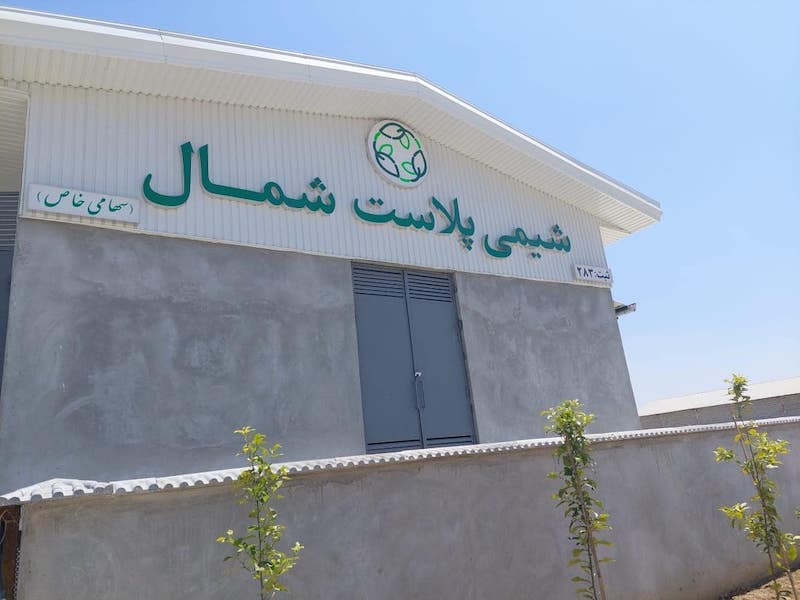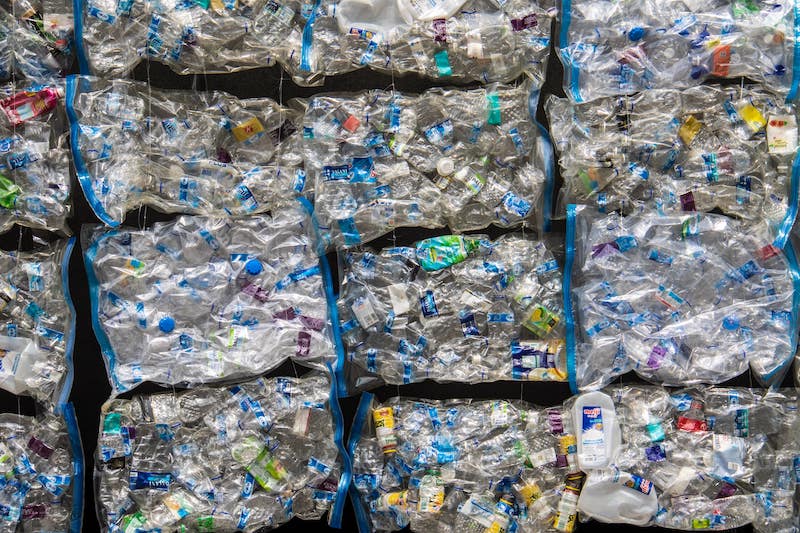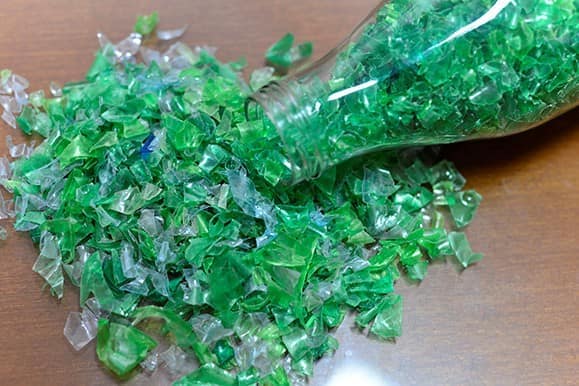Interview With Mr.Roham Habibi, CEO Of North Plast Shimi
Please begin by describing North Plast Shimi Company’s history and current operations.
In Mazandaran Province’s Joibar Industrial Town (IRAN), the North Plast Shimi Company, with a capacity of 5000 tons of recycled flakes from waste PET bottles, began operations in May 2020.
A significant portion of the country’s plastic bottle waste is located in the northern region, so the board of directors decided to expand and boost production lines to meet the demands of polyester synthetic fibre factories (hollow/solid), granule-sheet, and compound production sets.
You probably already know that plastic waste takes more than 500 years to decompose in nature. As a result of Iran’s poor infrastructure and management for collecting and recycling this “dirty gold,” particularly in the northern provinces, the giant recycling facility for PET bottles in the country was decided to be built.
The most up-to-date and well-equipped production lines with a daily capacity of more than one hundred tons of hot-washed flakes production have been built on a land area of eleven thousand square meters and a superstructure of four thousand five hundred square meters.
Hopefully, they should be operational by the beginning of July this year. This production line is based on the years of experience and technical knowledge of the experienced managers of this company in the recycling and production of synthetic fibres.
The manufacturing of PET flakes will be segregated by colour, cleaned using the best techniques, and free of any impurity greater than 30 PPM in this collection.

A glance at the Mazandaran province’s North Plast Shimi Factory development site:
The province of Mazandaran is home to the project’s building location, which will serve as the country’s recycling industry hub. This province should be free of environmental waste because it is one of Iran’s most densely populated areas in terms of population density (measured in terms of per capita consumption).
It is geographically tiny compared to other provinces (low cost of collection and transportation), and it serves as the strategic centre of the country’s tourism industry. As previously stated, Mazandaran is the best location for the construction of the factory because of its easy access to raw materials on the one hand.
Because Mazandaran’s cities are close to each other, its closeness to the national capital and other provinces are similar to Mazandaran in terms of population density and city distances from each other on the other hand.
How can your business, one of the largest in the Middle East for recycling plastic bottles, benefit the environment? Why has the production of recycled and the textile recycling market thrived so much in recent years?
Soft drinks, mineral water, and other foods and beverages in PET polyester bottles are becoming increasingly popular. On the other hand, the extreme promotion of the convenience spirit and the lack of cost associated with using throwaway bottles has also led to individuals purchasing beverages in disposable bottles rather than glass bottles.
Iranian manufacturers are not only not obliged to collect used bottles, but they also brazenly discuss increasing production, “entrepreneurship,” and dealing with environmental concerns by planting trees and obtaining official certifications. Additionally, they solely refer to the little emblem printed on the bottle label, which depicts a person throwing a bottle into a trash can.
They have no financial incentive to collect empty bottles because they have not incurred direct and reversible costs. They are not ethically obligated to release them freely because most have not received primary environmental education. Consumers don’t perceive a need to separate these bottles from other trash because there aren’t any PET recycling facilities in Iran or at least not somewhere with enough capacity.
PET bottles have become a disaster for the country’s ecosystem because they are not biodegradable and take up a lot of space. The dispersion of these bottles has produced an extremely unpleasant sight in most valleys and mountain slopes, promenades, beaches, roadside areas, and many other locations.

These bottles clog irrigation canals and bridges along rivers’ courses, especially downstream, and occasionally a mound of them can be observed in the lake behind dams. Bottles harm the environment in wetlands and lakes and likely scare and hinder bird migration and breeding.
The marshes, streams, and rivers that feed into them are examples of where the left of these bottles has reduced the aesthetic value of water bodies.
What goods does Plast Shimi provide to the textile and end-user markets? Which sectors and businesses use your products, specifically?
Produced Merchandise Using Recycled PET
1 – The manufacturing of polyester fibres and goods such as:
Carpets, clothing, sleeping bags, and various materials.
2- The manufacture of heat-formed sheets for manufacturing, packaging, and creating non-food coverings, clothing, rubbish baskets, etc.
The examples mentioned above demonstrate some of the typical applications for recycled PET. As was already indicated, its variety of uses can be expanded by adding for reinforcement or alloying recycled PET with other resins.
Making Alloy:
These items are created using reinforced PET mixes from recycled PET bottles:
1. Vehicle Bumpers
2. Different kinds of Light and Recreational vehicles
3. Bumpers
4. Keyboards for Computers
5. Boating Equipment (oars, life jackets, etc.)
6. Helmets
7. Fences, Windows, and Doors
8. Belt Conveyors
9. Sporting Goods
Recycled PET Alloy and Polycarbonate Are Used for:
• Its usages in the automotive sector: The manufacturing of electrical and electronic components, bumpers, panels, dashboards, front and side mirror covers, etc.
• Manufacturing components such as air compressor covers, combustion chambers, pumps, and other elements needed for energy production.
• The manufacture of cartridges and other printing and copying supplies, etc.
Glass Fibre-Reinforced Mixtures of Recycled PET:
Most recycled PET combinations contain mineral reinforcements such as glass, mica, talc, etc. In the automotive industry, 35% of these mineral additives are used in the final product. Other uses for recycled PET reinforced mixes include the manufacture of door handles, seat handles, tables, and inside and outside car decorations.
How would you rate Iran’s ability to produce PET recycled fibres? How would you rate Iran’s textile recycling sector overall?
Iran’s Per-Person PET Bottle Consumption:
A minimum of 288,000 tons of polyethylene terephthalate (PET) bottle-grade waste reached the market in 2020. Each Iranian solely consumed roughly 3.44 kg of new PET during that year, based on the country’s population of about 83 million.
The manufacturing of non-alcoholic carbonated drinks, liquid oils, mineral water, dairy products, other foods, detergents, and hygiene products, which are required to be used in new PET per the governing standards, accounts for the most considerable utilization of these containers.
PET Recycling Demand:
• Usages for Recycled PET: The creation of fibres, sheets, belts, containers, injection parts, and bottles are the most effective uses of recycled PET. Recycled PET can be made into competitive goods in various industries and is essentially indistinguishable from new, intact PET.
Reproducing bottles is one of recycled PET’s critical applications. Used bottles are converted into chips in this method, which makes it possible to build bottles at a lower cost than buying new material.
• The production of polyester fibres from recycled PET is another use for it. These fibres are used to make carpet yarn, rug, bag, and shoe industries, as well as a small amount of clothing. Manufacturing carpets, decorative covers, and sofa covers use these fibres extensively.
• Additionally, thermoforming recycled PET is used for packaging foods like eggs and vegetables.
• Making sheets out of recycled PET is another use for it. Transparent, green, and black sheets are made in these colours.
• Making plastic pallets is another innovative use for recycled PET. Pallets are produced using a cutting-edge procedure called compression injection, in which waste material flakes are introduced into the system before delivering the finished pallets.
Plastic pallets have received more attention due to the increased forest devastation caused by the production of wooden pallets.
Polyester Recycled:
Environmentally friendly recycled materials are the main focus of the fashion business. Recycled polyester currently makes up around 49% of all clothing produced worldwide; by 2030, this percentage is predicted to nearly double. The most extensively used reusable material in the textile sector is recycled polyester.
Iran’s contribution to the global trend of the chip, fibre, and polyester filament yarn production and consumption:
The process of supply and demand for fibres, which serve as the primary raw material for the textile industry, is crucial for forecasting and planning this sector’s future.
Experience has proven that increases in raw material production primarily fuel the expansion of downstream industries. As a result, many sectors of the textile industry are driven by the production of various types of fibres.
Additionally, given that raw materials make up a sizable portion of the final cost of textile products like yarn and fabric, the cost and accessibility of various are crucial factors in determining how competitively priced textile products are worldwide.
Natural like cotton, wool, and silk met the majority of the needs of the textile industry during the 20th century. However, in the early 20th century, methods for producing synthetic fibres like polyamide, nylon, polyester, acrylic, polypropylene, etc., were developed.
Gradually, these fibres were also able to play a significant role in meeting the expanding demands of the global textile industry, especially with the increase in their production and supply following the Second World War.

Does this industry have any prospects for exports?
Competition between Polyester and Cotton:
Until the early 1980s, cotton was considered the undisputed king of fibres. During this time, out of the nearly 30 million tons of threads produced globally, about 15 million tons (or more than 50%) were cotton fibres, with the remaining being made of other natural and synthetic materials.
However, cotton alone could not meet the textile industry’s expanding demands due to population growth, a decline in arable land, a rise in the market for food crops, etc. On the other hand, as the petrochemical and polymer industries developed, synthetic —particularly polyester —became more prevalent in this sector.
Thus, by the early 2000s, the production of polyester was equal to that of cotton at 20,000 tons annually. After that, a relatively steep rising slope was maintained in manufacturing polyester.
According to statistics, polyester fibre production exceeded cotton fibre production in 2015, demonstrating the ‘ significant role in the textile industry.
However, as of now, the production of cotton worldwide has increased to around 25.7 million tons annually with the aid of modern agricultural techniques and genetically modified cotton varieties. This represents a share of these of 25% of the total global fibre production in 2017. But in the same year, polyester output increased to around 60 million tons annually, representing a 60% share of all fibre production worldwide.
Textile such as wool, silk, polyamide-nylon, acrylic, viscose, etc., are consumed less than 18 million tons annually after polyester and cotton, demonstrating the importance of focusing on polyester and cotton . In 2017, production and consumption of increased by 0.05% from the previous year to more than 103 million tons.
Among the most popular used in the textile sector and related applications today, after polyester and cotton, are recycled cellulose (viscose, acetate, Tencel, etc.), nylon, polypropylene, acrylic, and wool.
The most significant member of the polyester family is polyester polyethylene terephthalate (PET), which is also utilized in the textile sector (in the form of staple , filament yarn, spun-bond non-woven fabric, etc.).
According to statistics, out of the 76.66 million tons of polyester that were produced globally in 2016 (including recycled polyester), nearly 44 percent was produced as filament yarn, 20.2 percent as staple , 27.5 percent in the title of the bottle, and the remainder was used to make a film and other polymer products. In other words, the textile industry employs more than 62% of the polyester produced globally.
Forecasts indicate that the pace of growth in worldwide fibre output from now until 2025 will be 3.7% per year, with polyester accounting for roughly 95% of the growth rate. In other words, polyester will be the only material driving the textile fibre business in the coming decades and will meet the market’s expanding demands.
Both filament yarn and staple fibre (discrete length), which have several varieties and sub-branches, are made from polyester and used in the textile industry.
Out of the roughly 60 million tons of textile polyester produced globally in 2017, around 36 million tonnes were produced as semi-formed and fully formed filament yarn (POY-FDY), and almost 24 million tons were produced as staple.



















